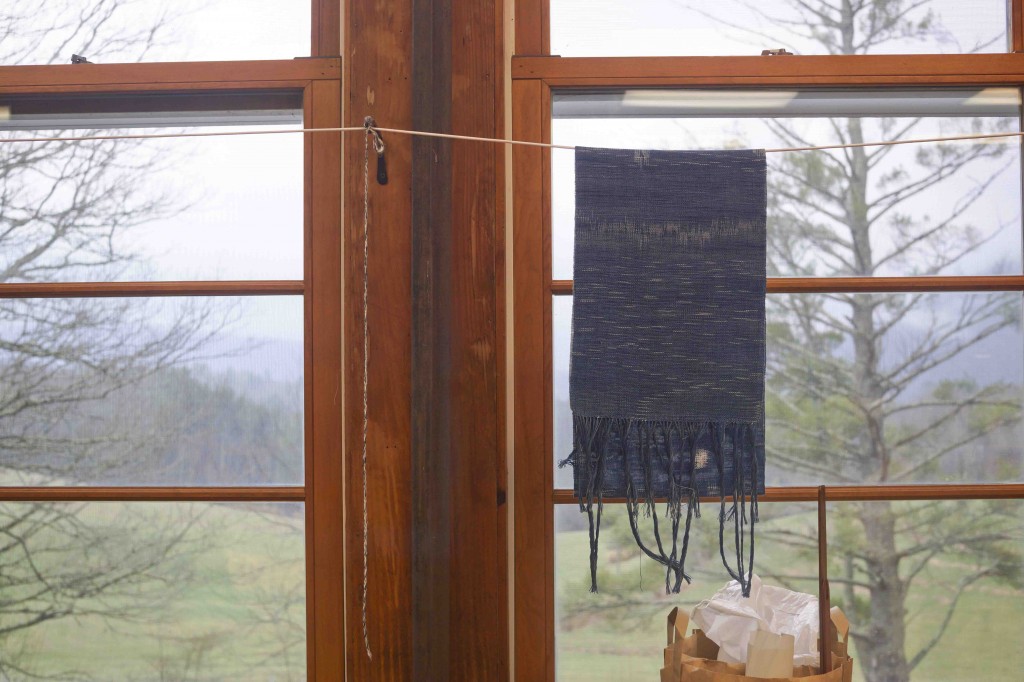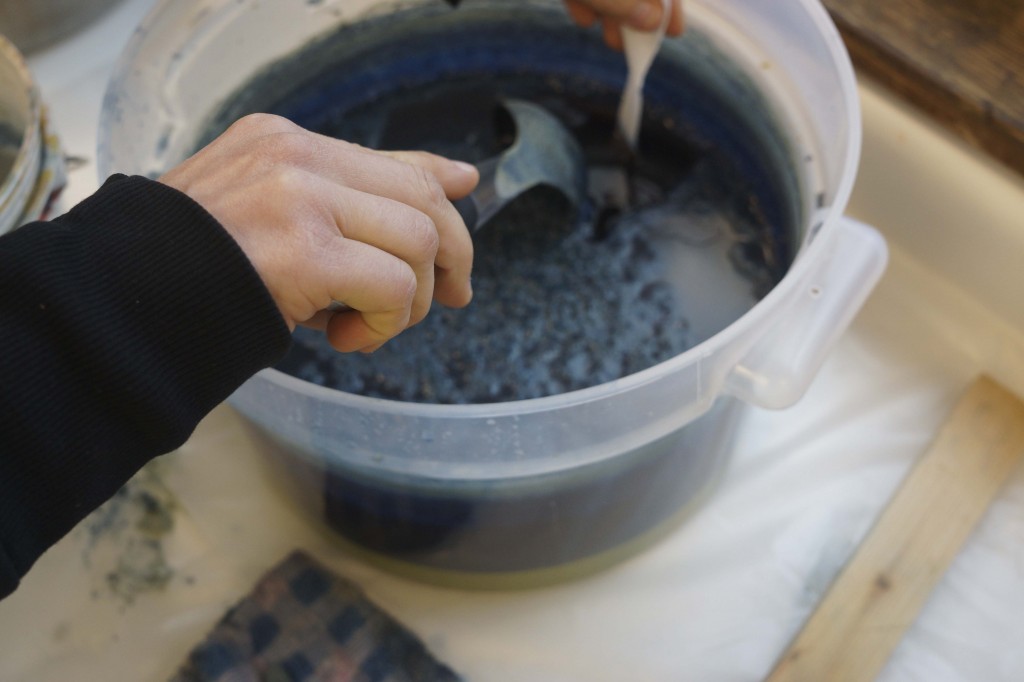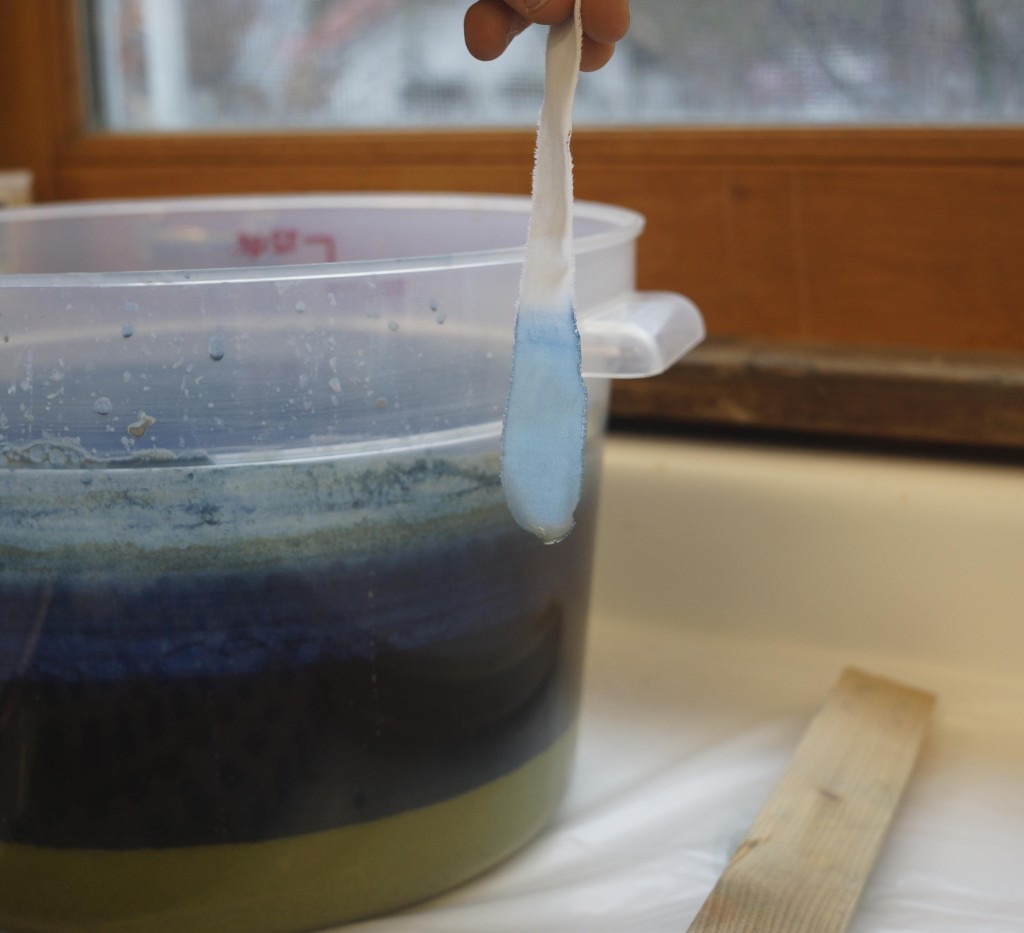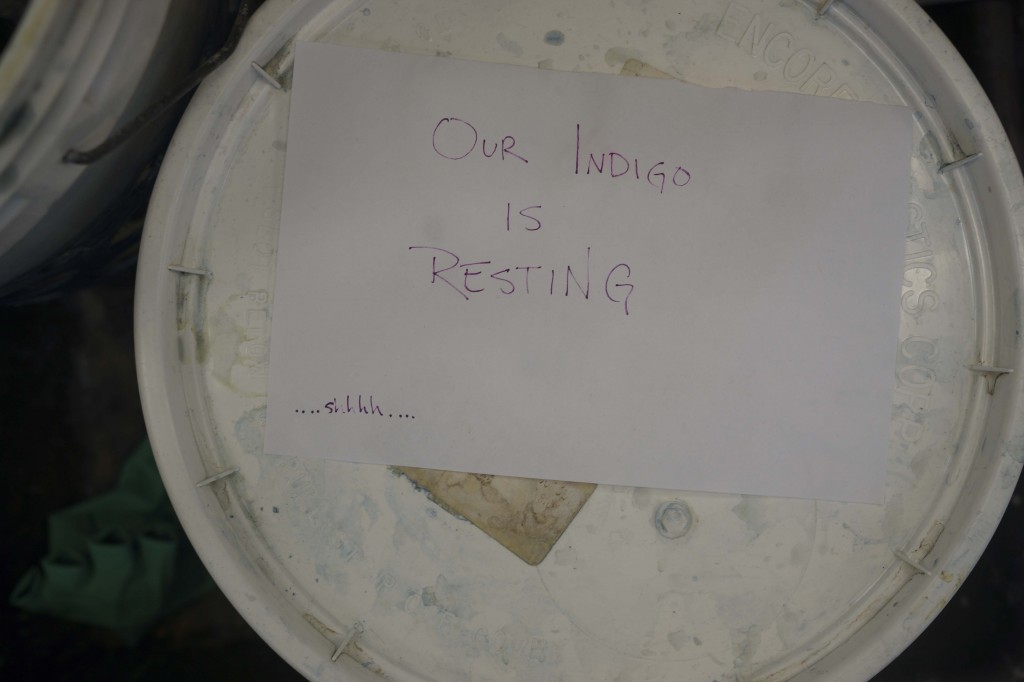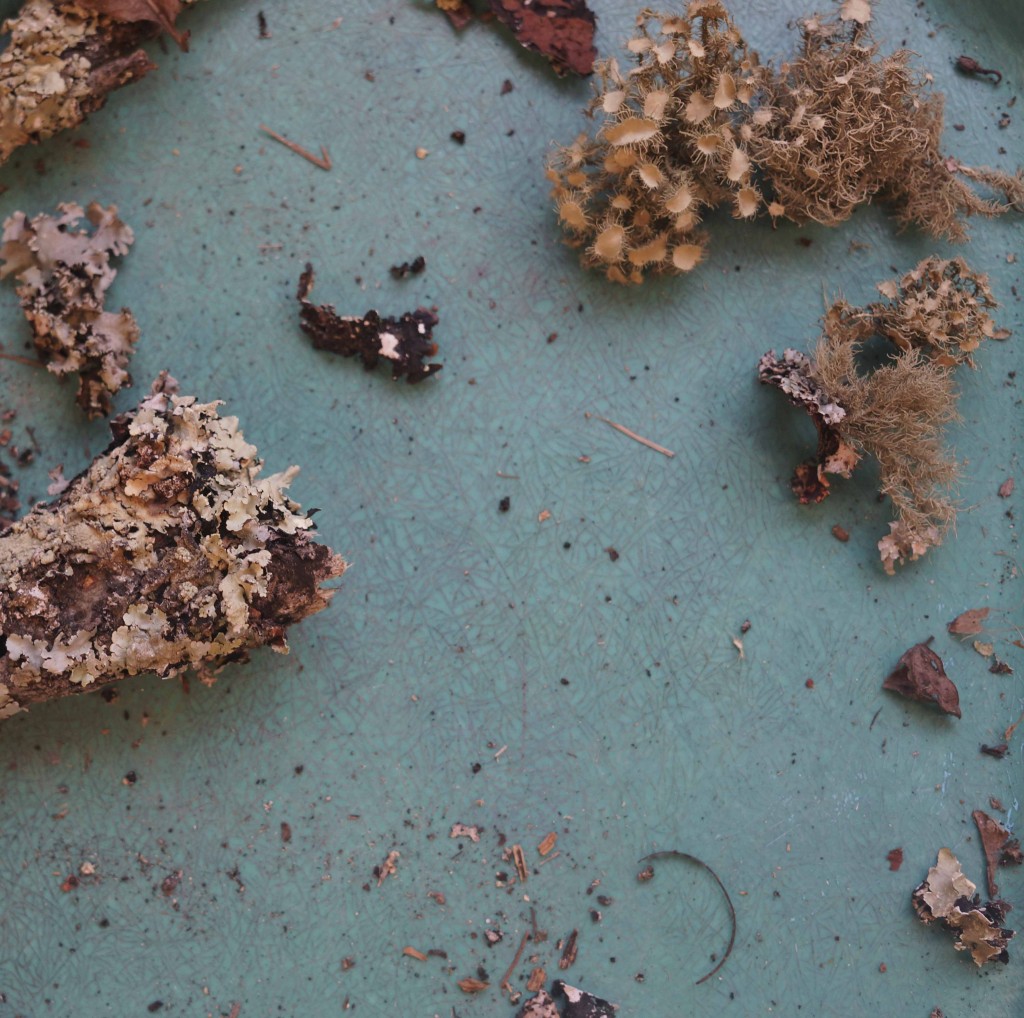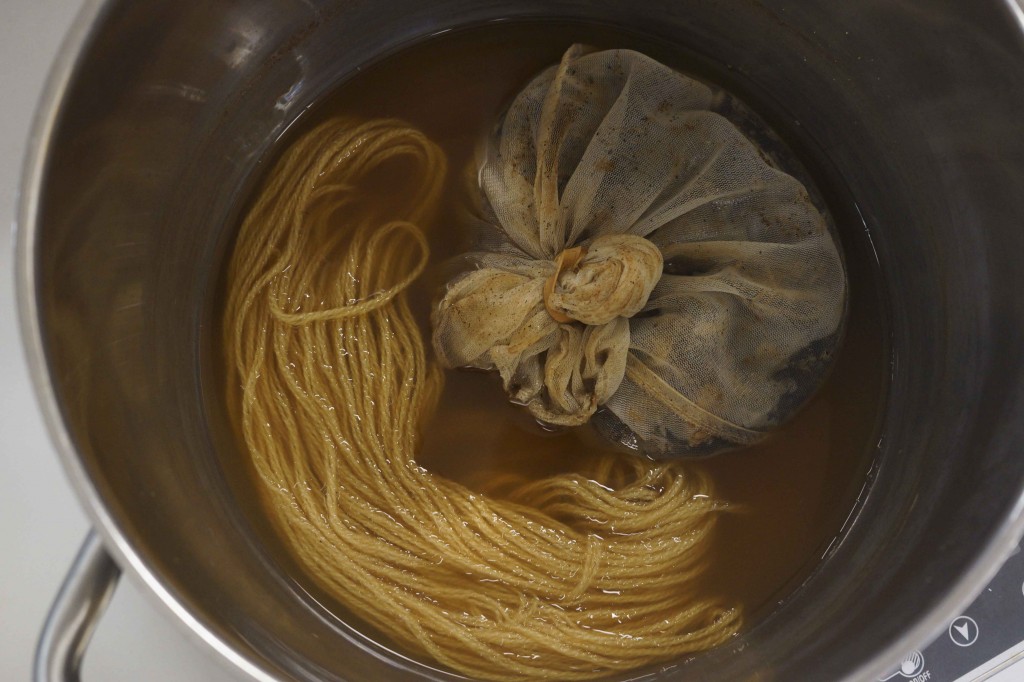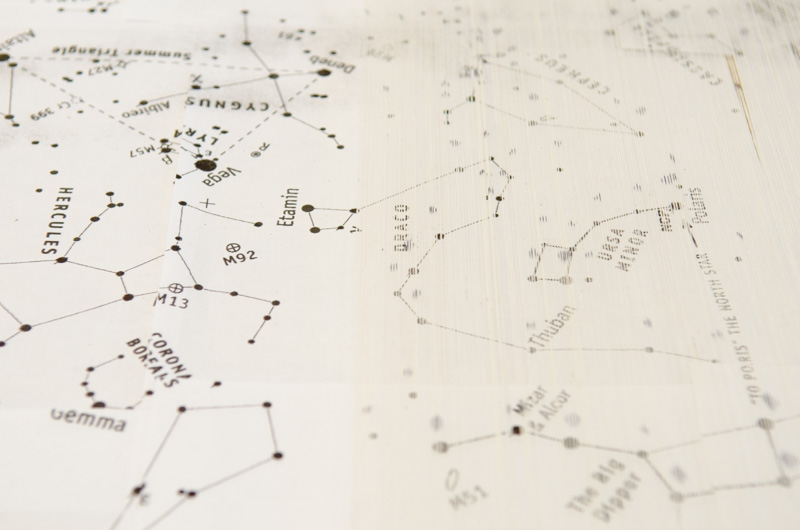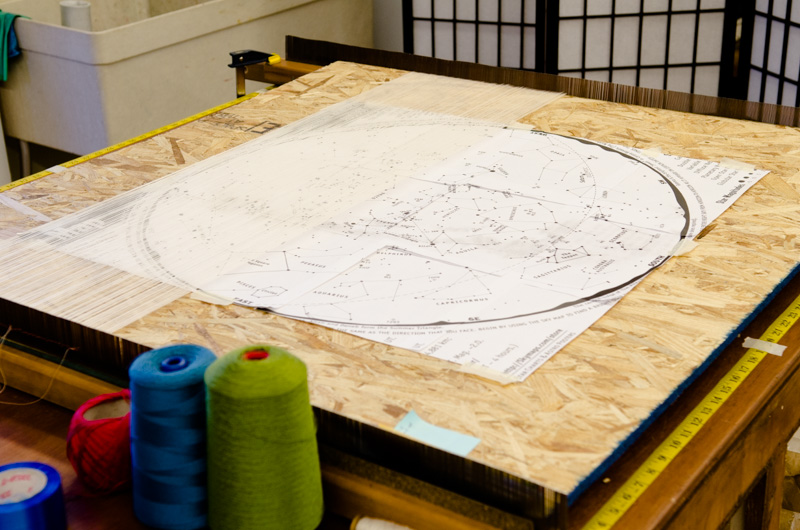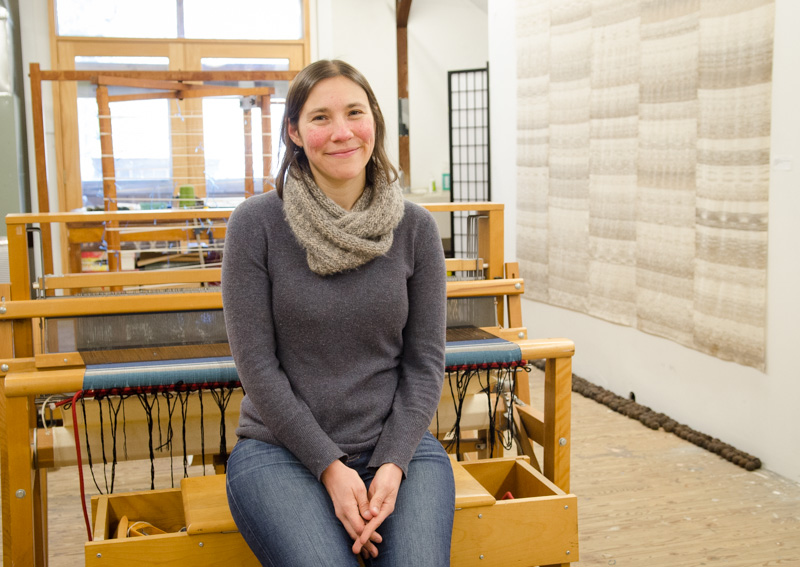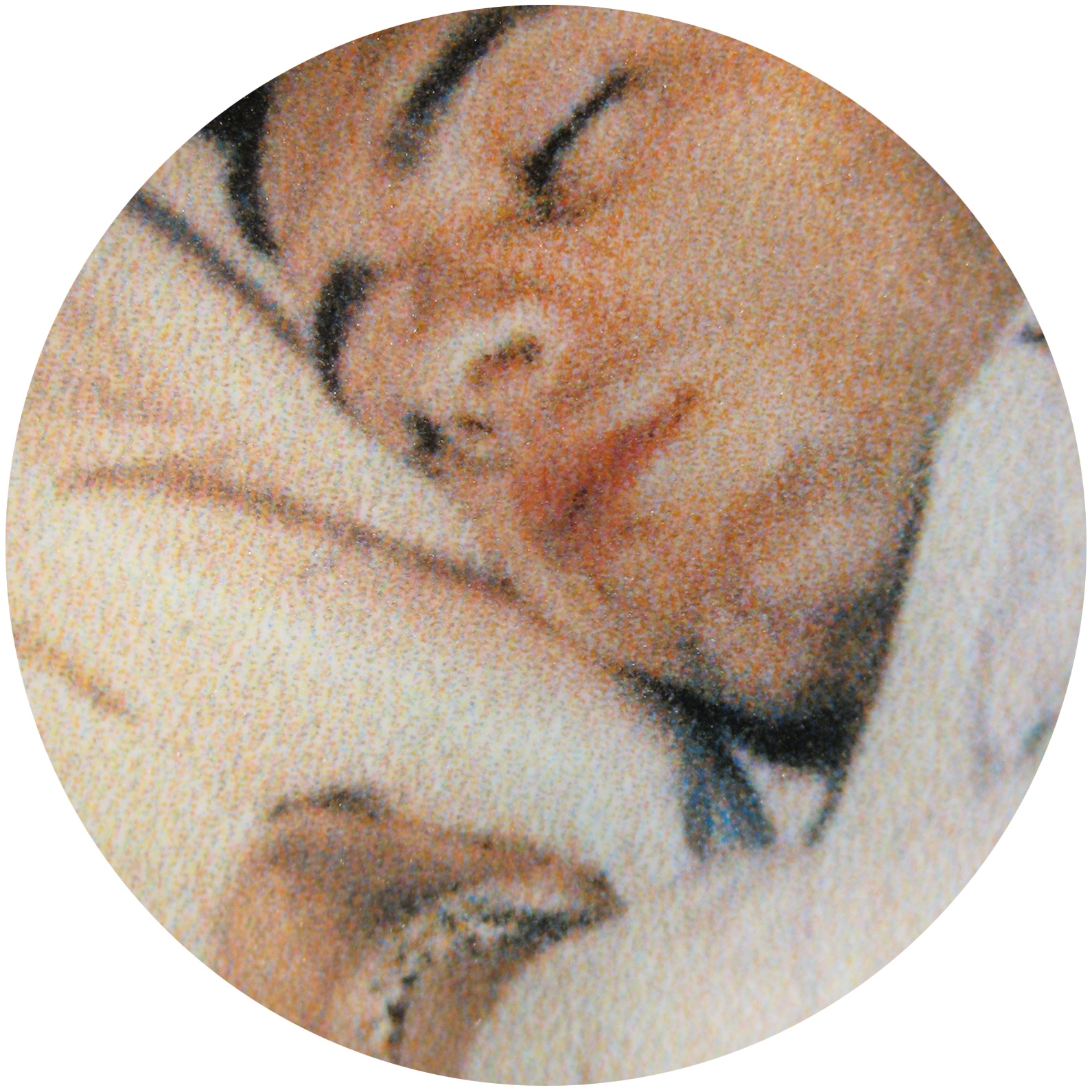
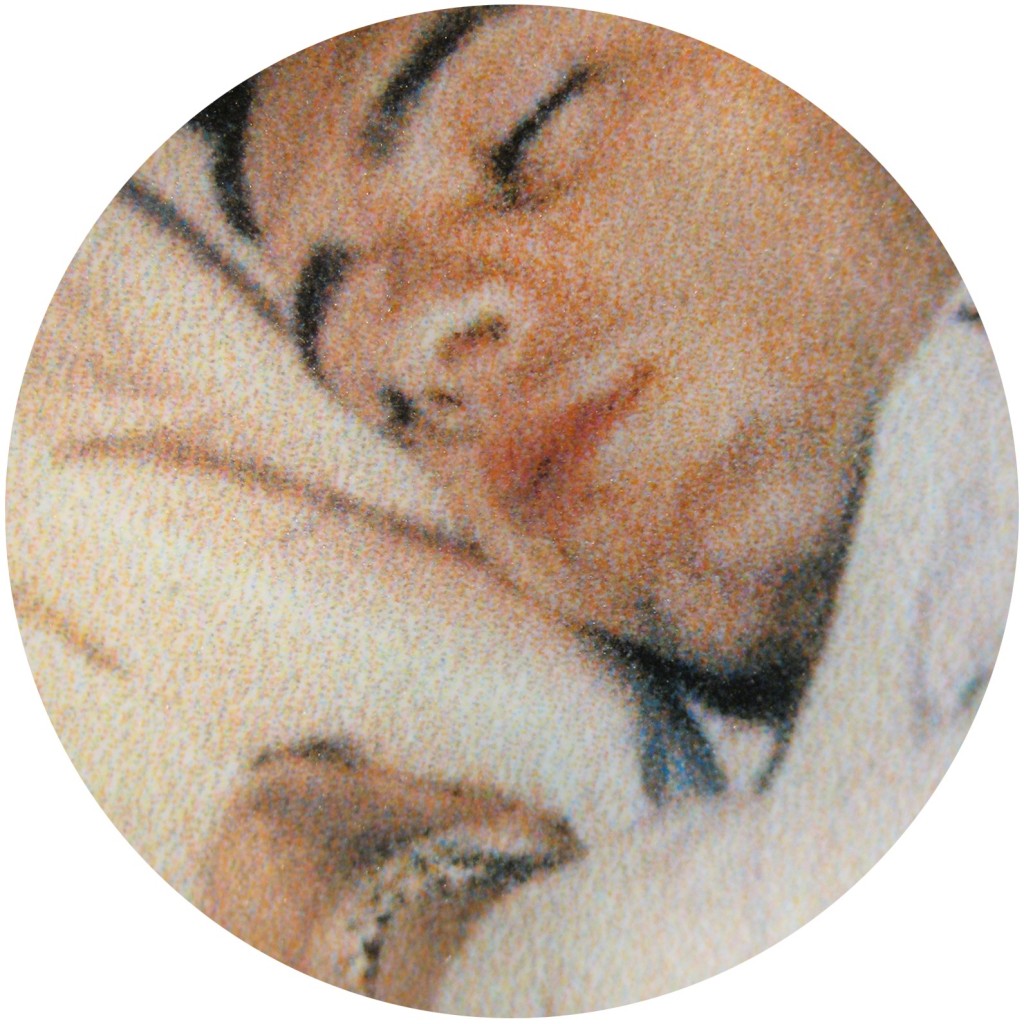
Betsy DeWitt, from Upon Closer Examination, archival inkjet print of a 4″ round photomicrograph
Like Batman, Marie Curie, and Wallace Stevens who came before them, our studio coordinators live intense double lives, serving as the veritable rocks for the Penland studios during the day and making their own art (at night? When? How do they do it?)
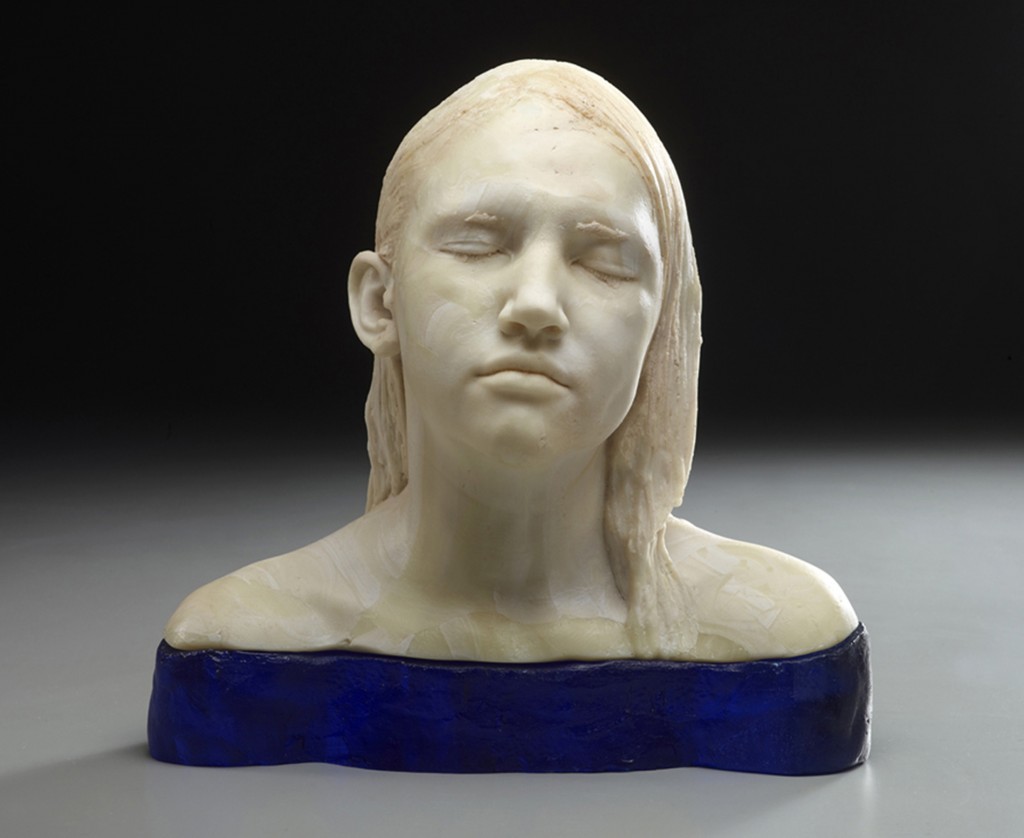
Dean Allison, Ally, cast and blown glass
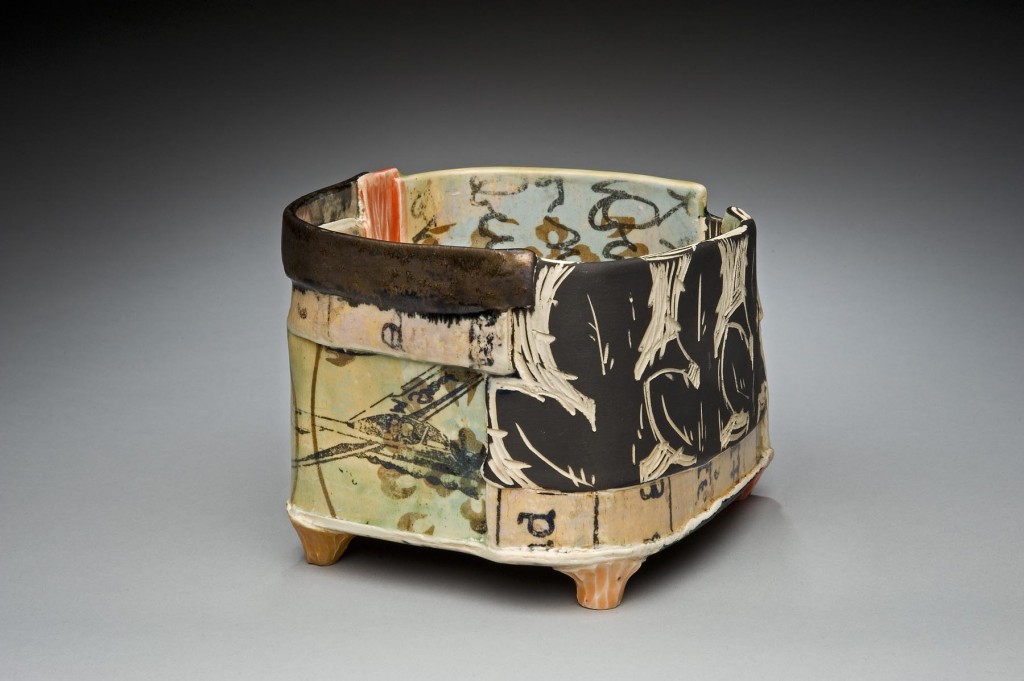
Susan Feagin, Square Bowl, mid-range clay, screen printed slips, sgraffito, colored glazes, 2011. Photo by Walker Montgomery.
We’re very excited to announce the opening of the Penland Studio Coordinator show at Green Plum Gallery, 130 Oak Avenue (Upper Street) in Spruce Pine, April 21. A reception will be held on April 25, 5:00-8:00 pm. Artists include:
Amanda Thatch (Textiles, works on paper)
Betsy DeWitt (Photography)
Ian Henderson (Metals)
Daniel T. Beck (Sculpture)
Sean P. Morrissey (Works on paper)
Susan Feagin (Ceramics)
Dean Allison (Cast and blown glass)
Marvin Jensen (Furniture)

Amanda Thatch, detail from Begin Again, textile
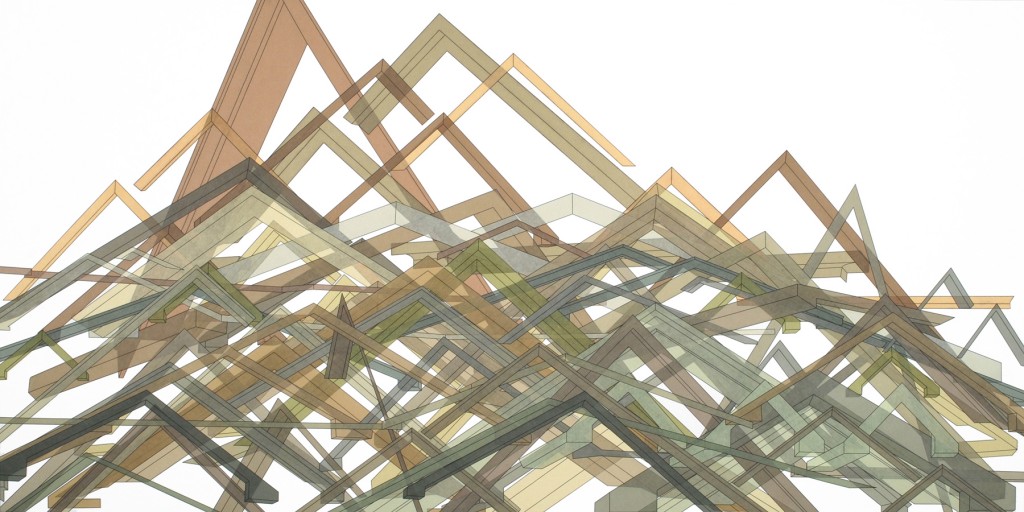
Sean P. Morrissey, Pile #2, collage on panel, 60 x 30
The show, dubbed In the Beginning There Was Marvin: 8 Coordinators, 15 Studios, will be on view these dates and hours:
Monday, April 21: 4-7 pm
Tuesday, April 22: 4-7 pm
Wednesday, April 23: 4-7 pm
Thursday, April 24: 4-7 pm
Friday, April 25: 5-8 pm (reception)
Saturday, April 26: 10-5 pm
Sunday, April 27: 11-3 pm
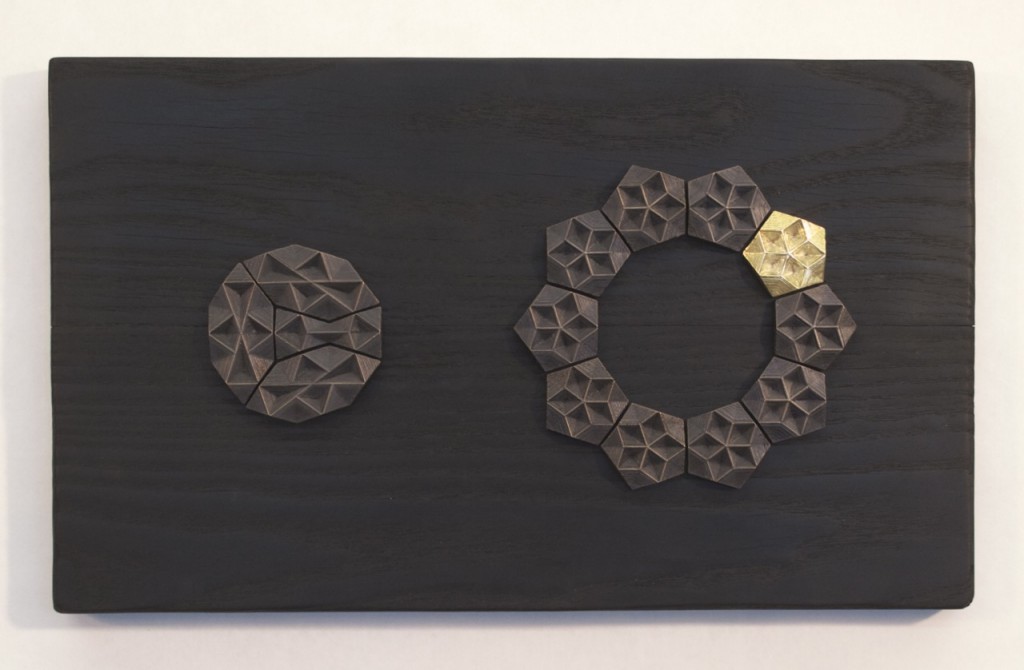
Ian Henderson, Partum, bronze, gold-plated silver, ash
Some of the works included in this blog post will be on view. Some won’t. Expect the marvelous.


